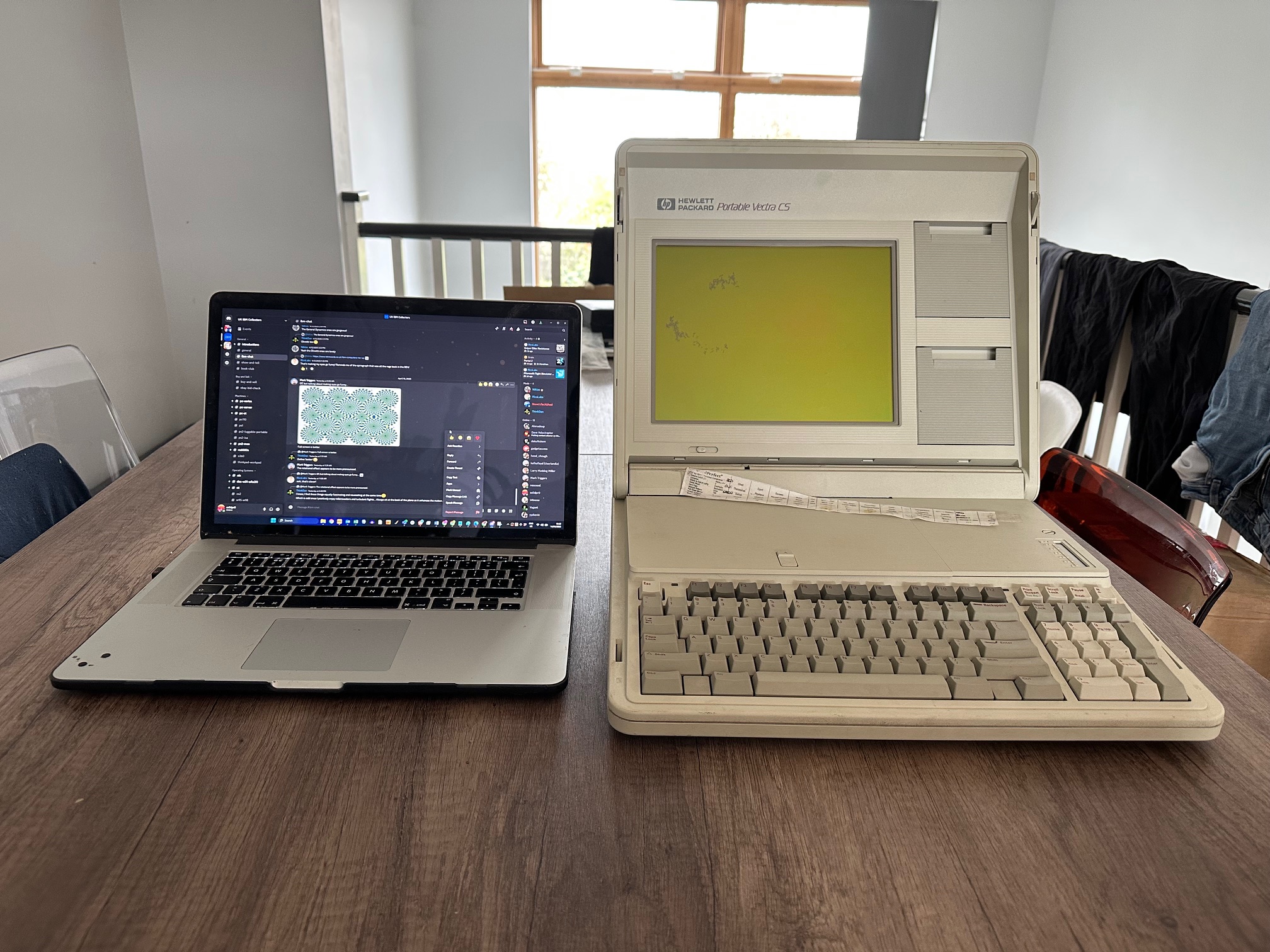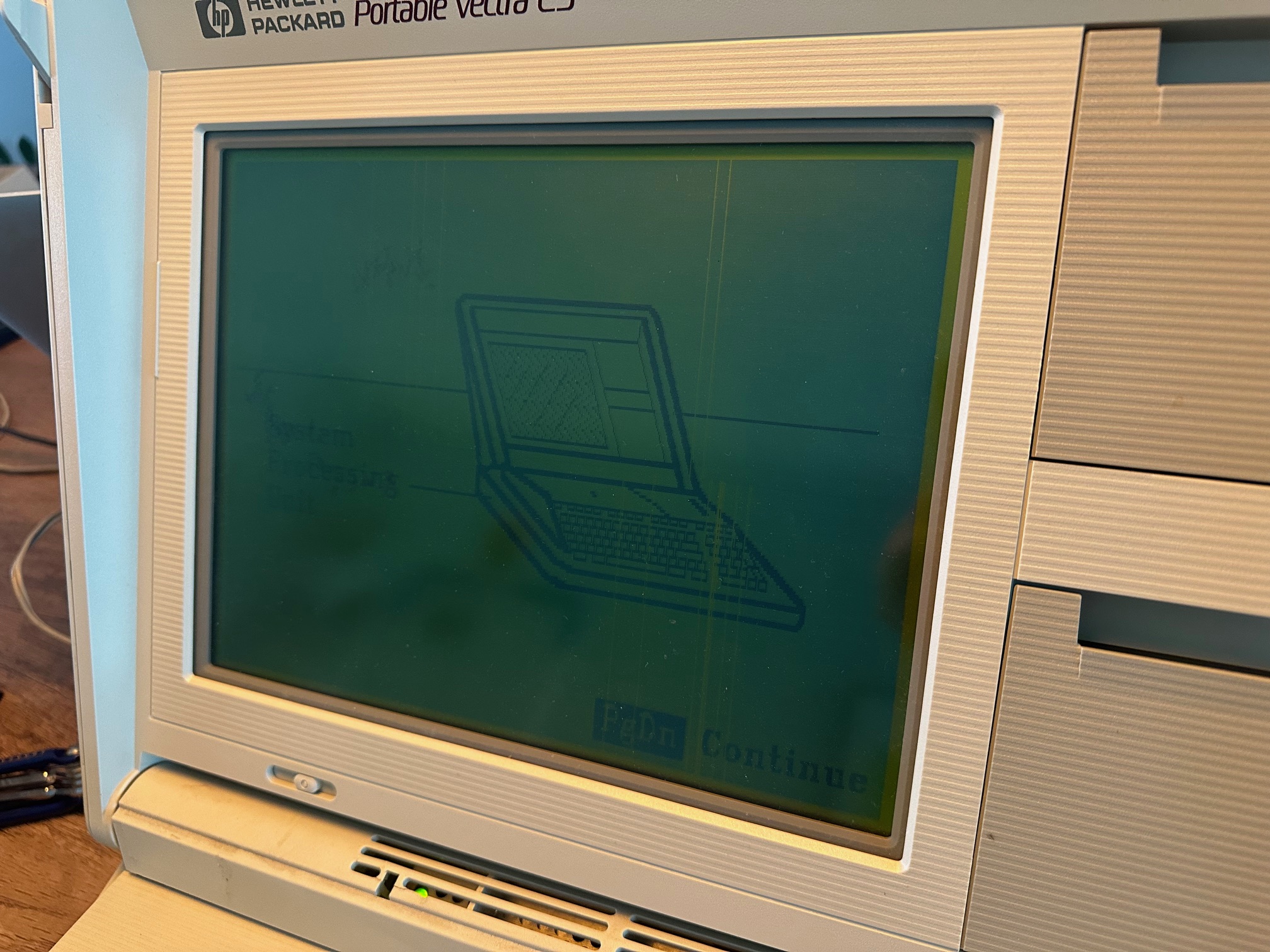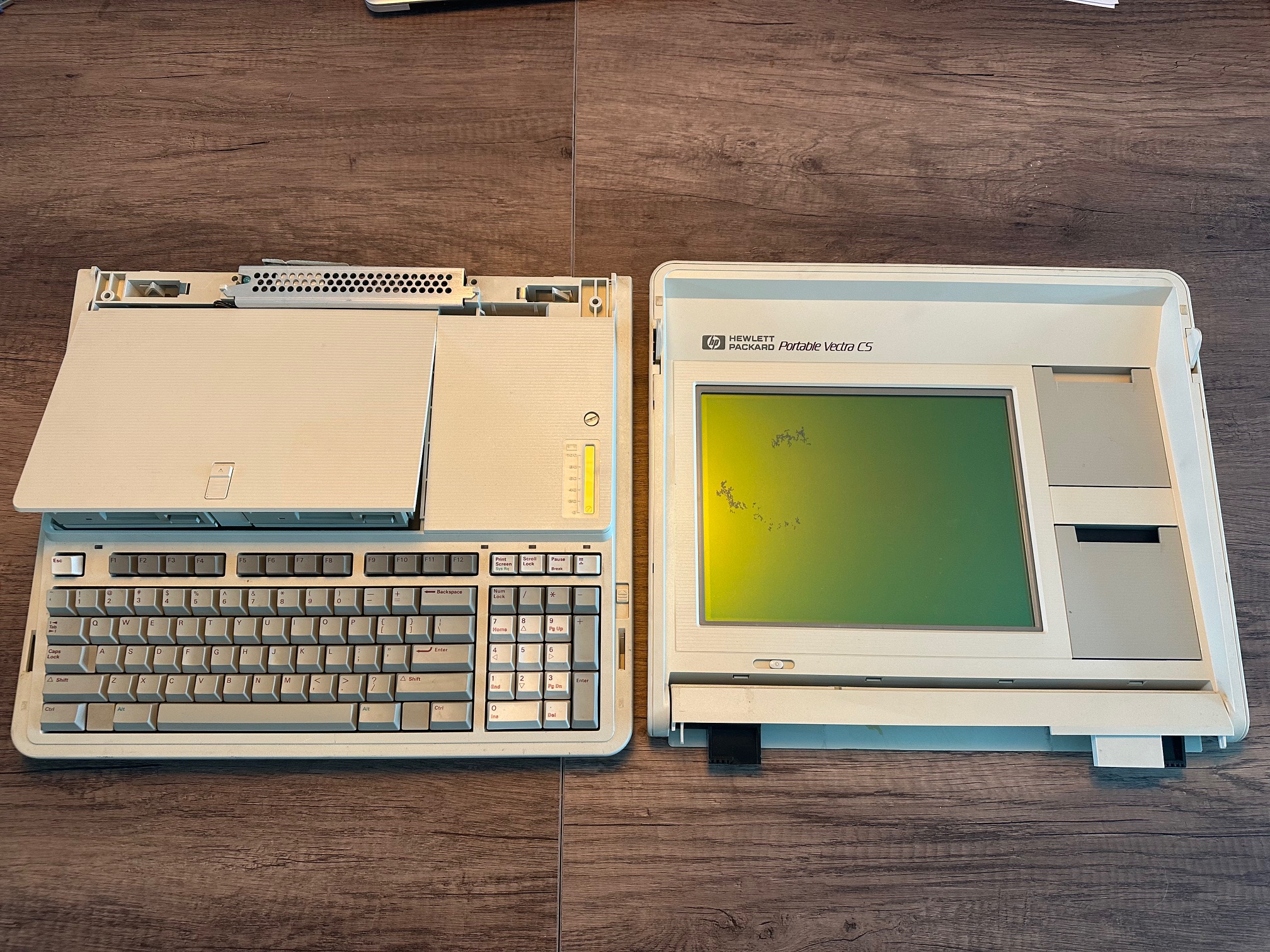HP's 1985 desktop Vectra product line was their first Personal Computer which was IBM-compatible. Sod's law meant that whilst it was one of the first pure 3.5" floppy-drive personal computers, it was too far ahead of the game. IBM and many of it's compatibles had not yet moved from 5.25" discs and everyone wanted a 5.25"-compatible machines to run all of the most popular software.
The Vectra product line continued until Compaq was acquired by HP in 2002 and adopted their line of personal computers as their own.
The CS moniker was a vague way to allude to the machine being cost reduced. The CS model name was then adopted by HP's Portable for reasons unknown. My guess is that the CS was their most popular desktop at the time and so why not try and wow those people who took a punt with a portable of the same name.

The Portable CS was introduced on the 1st of September, 1987. until 1st of May, 1989 and had a large LCD screen - but it was monochrome and not backlit, which makes it very hard to see unless you're in good lighting conditions and facing the screen dead centre. The machine has a 9-pin CGA output via an expansion card in the 4th slot underneath. This card also provides a video connection to the internal LCD display and a 25-pin serial connector. Other specifications are:
-
IBM PC/XT compatible NEC V30 processor (7.16 Mhz, 8086-compatible), socket for a 8087 FPU.
-
640KB RAM (expandable only with a custom dual serial & RAM board)
-
Two 1.44MB 3.5" disk drives (Epson SMD-240)
-
12" yellow-green filter monochrome supertwist LCD display (no backlight)
-
Lead-acid 6V battery (6-10 hours of use, according to the service manual)
-
Size: 420 x 353 x 90 mm. Weight: 8 kg.

You could get the machine with either two 3.5" 1.44Mb floppy drives or with 1 x 3.5" drive and 1 x 20Mb hard disk drive.
Removing the bottom plastic reveals the motherboard and the four propietary expansion bays. All machines should have the one manditory module which has a 25-pin serial port, the internal LCD driver and an external 9-pin CGA display connector. Other optional expansion boards included a 20MB hard disk controller, a 2400bps modem and a dual-serial with RAM module.
Despite it being relatively lightweight, has it's own carry handle, battery and nice Epson 3.5" drives it was not a success. The 3.5" drives, despite being far superior to 5.25" drives, were not yet standardised and the machine was massive. This was a time where the portable personal computer was evolving almost every few months with new form factors (such as the 1987 Compaq Portable III), new ideas around storage and media and fresh ihow to make machines more usable in the field. Many other portable machines including Compaq and IBMs bulky CRT luggables were bigger and heavier but were far more modular taking all types of hard disks and floppy drives.
The entire lid and LCD assembly can be removed by releasing two clips on the back of the machine and the display can run via it's CGA port.
Here is a review from Infoworld circa May 1998:

I bought this Vectra from the US in the spring of 2025 from a seller on ebay. I'd had a saved search for 'HP vectra' for many years since being a collector of many of the shape-shifting portables of the 80s and 90s. It's a nice working version with it's original power supply but the screen is degrading slowly - probably eventually to oblivion. However, despite the primary floppy drive's loading mechanism being siezed, it was unsiezable and worked.
On the same drive, I recapped the PCB, re-greased it's spindle and cleaned the read/write head with 100% IPA. The other drive just works perfectly and none of the eletrolytics were leaking or showing signs of degredation, so I left them as-is.
My machine had twin EPSON SMD-240 3.5" floppy drives inside, which appear to have been originally specified at 720Kb drives - however both of mine happily read 1.44" disks.
The floppy drives are extremely easy to access and remove, with only the back left hex screw holding a small sheet of metal to ground the drive - just unscrew the back left screw and the whole drive will slide out. The EPSON SMD-240 does appear to be a relatively standardised 3.5" floppy drive and I'm working on seeing if at GOTEK/Flashfloppy + drive will work.
The Vectra CS does not have a BIOS configuration utility built-in and has to be loaded from a floppy disk, which also contains a tutorial for using the machine (and indeed describes many fundamentals of early personal computers). The machine will boot happily from a compatible floppy even with no BIOS configuration in place.
One slightly weird but nice design feature was that the whole lid and LCD panel could be removed - assuming you would be running the display via the external 9-pin CGA port.

Here is a copy of the original TELEDISK disk image for the CS setup and tutorial disk. Teledisk is a DOS only image utility tool and this worked fine with me onto a 1.44Mb disk.
If you don't have it, here is TELEDISK for DOS.
And if you don't have a DOS computer to write to floppy disks, here is the same files in a regular floppy image file.

